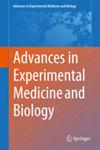铁和肝脏疾病。
4区 医学
Q2 Biochemistry, Genetics and Molecular Biology
Advances in experimental medicine and biology
Pub Date : 2025-01-01
DOI:10.1007/978-3-031-92033-2_16
引用次数: 0
摘要
铁与肝脏疾病之间的相互关系突出体现在铁过多会导致肝脏疾病,而肝铁超载也会导致急性或慢性肝脏疾病。作为铁的主要储存场所,肝铁浓度是铁过载条件下全身铁的可靠替代标志物。因此,评估肝铁对于通过治疗性放血或铁螯合剂治疗铁超载的开始和监测是重要的。本章综述了肝脏如何控制铁稳态,并讨论了如何在原发性和继发性肝脏铁超载疾病之前评估肝铁。本文章由计算机程序翻译,如有差异,请以英文原文为准。
Iron and Liver Disease.
The mutual relationship between iron and liver disease is highlighted by the fact that too much iron can cause liver disease, while hepatic iron overload can also result from acute or chronic liver diseases. As the principal storage site for iron, hepatic iron concentration is a reliable surrogate marker for total body iron in iron overload conditions. Assessment of hepatic iron is therefore important for the initiation and monitoring of treatment of iron overload by therapeutic phlebotomies or iron chelators. The present chapter reviews how the liver controls iron homeostasis, and discusses how liver iron can be assessed before primary and secondary liver diseases with iron overload.
求助全文
通过发布文献求助,成功后即可免费获取论文全文。
去求助
来源期刊

Advances in experimental medicine and biology
医学-医学:研究与实验
CiteScore
5.90
自引率
0.00%
发文量
465
审稿时长
2-4 weeks
期刊介绍:
Advances in Experimental Medicine and Biology provides a platform for scientific contributions in the main disciplines of the biomedicine and the life sciences. This series publishes thematic volumes on contemporary research in the areas of microbiology, immunology, neurosciences, biochemistry, biomedical engineering, genetics, physiology, and cancer research. Covering emerging topics and techniques in basic and clinical science, it brings together clinicians and researchers from various fields.
 求助内容:
求助内容: 应助结果提醒方式:
应助结果提醒方式:


